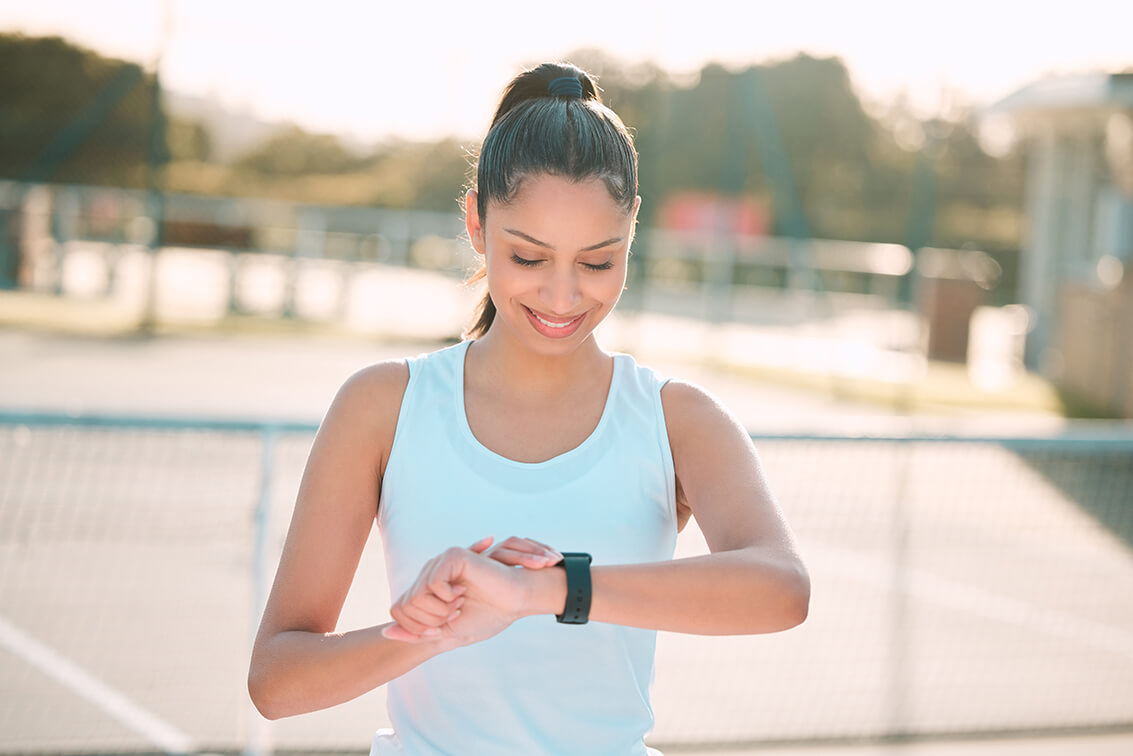Considering walking and cycling to boost your health? These activities offer an efficient and enjoyable pathway to a stronger heart, a leaner physique, and a clearer mind. Our guide delves into the walking and cycling health benefits, setting the stage for the informative exploration ahead without giving it all away at once.
Key Takeaways
- Regular walking and cycling can reduce the risk of heart disease, improve mood, aid weight management, and lower the likelihood of early death and various serious illnesses.
- Walking and cycling offer distinct benefits, with walking improving bone density due to its weight-bearing nature, and cycling being better for those with joint pain as it is non-weight bearing.
- Cycling tends to burn more calories than walking, thus it might be a preferable option for weight loss goals; and both exercises provide mental health benefits by reducing stress and anxiety.
Stride and Ride: Uncovering the Top Walking and Cycling Health Benefits

Did you realize that biking or briskly walking around your local park can have the following health benefits:
- Cut your risk of heart and circulatory disease by as much as 35%
- Lower early death by up to 30%
- Help in preventing several serious illnesses including heart disease, asthma, type II diabetes, certain types of cancer, stroke, and depression
These simple activities can have a significant impact on your overall health and well-being.
But the benefits of walking and cycling don’t stop at disease prevention. These activities are instrumental in:
- Managing weight
- Lowering blood pressure
- Fortifying the heart and lungs
- Enhancing mood and energy levels
So, whether you’re hopping on an exercise bike, going for a bike ride, or simply walking outdoors, you’re taking steps towards improved health.
However, for optimal health benefits, it is advisable to partake in at least 150 minutes of moderate aerobic activity weekly. Don’t worry if that sounds a lot. You can start with cycling sessions of just 10 to 15 minutes and gradually increase. Remember, the key to lifelong fitness is to find cycling and walking enjoyable. After all, the best exercise is the one you enjoy and stick to!
Introduction

Walking and cycling are two of the most popular forms of aerobic exercise. These activities are not just excellent forms of cardiovascular fitness, they’re also suitable for beginners and those with health conditions or injuries, thanks to their lower impact compared to activities like running or jumping rope.
Moreover, simply having a good pair of shoes is all you need to start walking, making it an affordable exercise option accessible to many. Walking can be easily integrated into daily routines for both transportation and recreation. And if you’re worried about the weather, both walking and cycling offer the flexibility to be performed indoors or outdoors, ensuring they are accessible activities regardless of weather conditions.
So, whether you’re looking to manage your weight, bolster your immune system or simply stay active, walking and cycling are your go-to activities.
The Heart of the Matter: Cardiovascular Gains from Walking and Biking

This is why we label it as ‘cardio’. Regular physical activity such as walking and cycling can significantly reduce the risk of serious illnesses like heart disease and type II diabetes, while also improving mood and blood sugar regulation.
Cycling shines specifically in the realm of fat burning. In fact, starting with just 10 to 15 minutes sessions and building to at least 150 minutes per week can help you achieve your weight loss goals. And did you know that cycling strengthens the heart, lungs, and blood vessels, leading to improved health and energy levels?
The secret to a successful cardio routine is to pick activities that you enjoy. Whether you prefer biking or walking, it’s all about keeping your heart healthy and your body active. And don’t be afraid to mix it up - alternating between walking and cycling can enhance your overall workout routine, preventing boredom and fitness plateaus.
Fortifying Bones and Joints: Weight Bearing vs. Non-Weight Bearing Pros

While both walking and cycling are superb forms of exercise, they provide distinct advantages for our bones and joints. Walking, being a weight-bearing exercise, helps in enhancing bone density and is particularly important for slowing down the rate of bone loss, which typically occurs at an average of 1% per year from age 40.
The load-bearing benefit for bone strength is specific to bones in the lower body during weight-bearing exercises like walking, and it’s worth noting that weight bearing exercises burn calories too. So, every step you take not only gets you from point A to point B but also contributes to stronger bones in your lower body.
On the other hand, cycling is a non-weight bearing activity that places less stress on the joints, making it a preferable option for individuals with joint pain. In fact, recumbent bikes offer a low-impact exercise alternative with added back support, beneficial for those with low back pain or joint issues.
Thus, be it striding or riding, you’re significantly benefiting your bones and joints.
Calorie Combustion: How Walking and Biking Melt Away Calories
Imagine if your everyday bike ride or brisk walk could be the key to eliminating those stubborn calories? Yes, walking at different paces and biking at various intensities will result in varying caloric burns, effectively burning calories.
To give you an idea, here are the approximate calories burned for a 150-pound person:
- Walking at a moderate pace for 30 minutes: 111 calories
- Walking briskly at 4 mph for 1 hour: 350 calories
- Cycling at a moderate pace for 1 hour: 280 calories
- Cycling at racing speeds over 15 mph for 1 hour: up to 850 calories
It turns out that cycling generally translates to a better workout, as it leads to a higher calorie burn for cycling at equivalent durations and intensities, thanks to the higher METS values of cycling compared to walking. This makes cycling a more effective exercise choice for weight loss goals, especially when time for exercise is limited.
So, whether you’re on a stationary bike or walking outdoors, you’re melting away calories with each stride and pedal.
Toning and Strengthening: Muscles Engaged by Pedals and Paces
In terms of toning and fortifying the body, both walking and cycling bring much to the table. Cycling, for instance, builds muscle strength in the lower body, mainly targeting the quadriceps, hamstrings, glutes, and calves. What’s more, biking requires engagement of the core muscles, enhancing balance and coordination by requiring harmonious movement between the upper and lower body.
During cycling, the pedal stroke involves hip and knee extension engaging primary muscles such as the gluteus maximus, hamstrings, quadriceps, calf muscles, and even abdominal muscles to some extent.
across various positions. Seated and standing hill climbs on the bike effectively target the quadriceps and hamstrings, strengthening and building endurance in the legs.
But don’t underestimate the power of a good walk. Both walking and cycling contribute to strengthening the legs, helping to decrease stress on leg muscles. So, whether you’re striding or pedaling, you’re working your muscles harder and getting stronger with each step and pedal.
Mental Clarity and Emotional Wellness: Psychological Benefits of Walking and Cycling
Walking and cycling aren’t solely about physical fitness. They also hold immense potential for mental clarity and emotional well-being. Cycling, for instance, helps to promote the production of endorphins, which act as natural painkillers and mood elevators, reducing symptoms of anxiety and stress. The mindfulness that comes from being fully engaged while cycling offers a break from stress-inducing thoughts, contributing to improved mental well-being.
On the other hand, walking can ease symptoms related to chronic mental health conditions such as anxiety and depression, improving sleep and endurance alongside offering stress relief. Increased blood flow and circulation from walking boost mood by positively influencing the body’s stress response mechanism. And don’t forget the social benefits - walking with friends enhances mood, wards off depression, and improves self-esteem.
Some benefits of walking include:
- Easing symptoms of anxiety and depression
- Improving sleep and endurance
- Offering stress relief
- Boosting mood through increased blood flow and circulation
- Enhancing mood and warding off depression when walking with friends
- Improving self-esteem
In essence, whether you’re biking or walking, you’re not just working on your body, but also nurturing your mind.
Tailoring Your Workout: Customizing Intensity for Personal Fitness Goals
Each fitness journey is distinct, and customizing your workout to align with your personal goals paves the path to success. To safely increase walking intensity, you could start with gradual adjustments such as incorporating faster walking intervals or adding hill walks and weighted exercises. High-Intensity Interval Training (HIIT) can also be implemented into walking workouts, significantly elevating the training impact in sessions as brief as 15 minutes.
On the other hand, cycling intensity can be personalized through the use of powermeters for precise feedback and employing HIIT to expedite calorie burn and fat loss. Including equipment such as dual-action or air bikes with movable handlebars can lead to a vigorous full-body workout suitable for intense cardiovascular and HIIT sessions. Remember, exercise intensity should reach a level where conversation becomes difficult, which is indicative of working out at 60 to 85% of maximum heart rate.
If you are using your phone to track your fitness goals, make sure to use a wireless charging case so your phone battery wont die on you when you need it most. StrideCharge offers a wireless charging phone case and mount, so you can mount your phone to your handlebars and wireless it.
So, whether you’re walking or cycling, you’re in control of your workout intensity.
Sustainability and Accessibility: Choosing Between Walking and Cycling
In terms of sustainability and accessibility, both walking and cycling rank highly, making the debate of biking vs walking an interesting one. Cycling is recognized as one of the most efficient and sustainable forms of transportation, offering significant health and environmental benefits. On the other hand, walking is an accessible form of exercise that requires minimal equipment, making it an equitable option.
Improved walking and cycling infrastructure, such as physically separated bike lanes and bike share programs, can enhance safety and comfort, encouraging more people to choose these modes of transportation and positively impacting community health. So, whether you’re striding or riding, you’re not just working on your fitness, you’re also contributing to a greener and healthier planet.
Must Have Accessories to Have on Your Walks and Rides

Fantastic, you’ve made the decision to start walking or cycling. However, are you adequately prepared for the journey? Having the right accessories can enhance your walking or cycling experience. Here are some accessories to consider:
- Running shoes that fit well and provide comfort during your regular walking stride
- A helmet for safety if you’re cycling
- Lights for visibility if you’re cycling
- A wireless charging phone case if you're walking or cycling
- A phone mount if you're cycling
- A lock for security if you’re cycling
- A water bottle to stay hydrated during your walks and rides
Don’t forget to invest in these accessories to make your walking or cycling experience more enjoyable and safe.
Lifelong Fitness: Walking and Cycling Across the Ages
Walking and cycling aren’t exclusively for the young. They are apt for individuals across various age groups, fostering lifelong fitness.
Walking, being a weight-bearing activity and a better exercise, is linked to reduced levels of fat in bone marrow and can significantly improve mobility for seniors, while also helping to maintain a healthy body weight.
Cycling offers a range of benefits for seniors including:
- heart health improvement
- calorie burn for weight management
- enhancing balance and coordination
- providing social opportunities which contribute to mental health and longevity.
For younger adults, regular cycling can improve heart health and offer fitness levels comparable to someone up to a decade younger, while also supporting cognitive functions such as long-term memory. Walking with children using specially designed strollers or alongside them on tricycles can provide a way to intensify the activity for younger adults.
In essence, walking and cycling are age-friendly activities offering a balanced approach in maintaining bone health and staying fit at any age. So, whether you’re 8 or 80, you can stride and ride your way to better health.
The Balancing Act: Managing Weight and Body Fat Through Exercise
Balancing weight and body fat is a challenge that walking and cycling can assist with. In fact, cycling can provide a more intense workout compared to walking, burning more calories, which aids in cardiovascular health and weight management. While walking burns fewer calories per mile, its lower intensity makes it a sustainable option for managing weight.
Walking increases fat metabolism more effectively than cycling when both activities are performed at the same intensity. Moreover, regular moderate-intensity aerobic exercises like walking have been shown to reduce waist circumference and body fat, including visceral fat around the abdomen.
So, whether you’re walking or cycling, you’re helping your body burn calories and lose weight effectively. Remember, the journey to weight management is not a sprint, it’s a marathon. So, take it one stride or pedal at a time.
Getting Started: First Steps and Pedals to an Active Lifestyle
Armed with knowledge about the benefits of walking and cycling, it’s time to embark on your journey towards an active lifestyle with your first strides and pedals. When starting your walking journey, look for running shoes that fit well from heel to toe and are comfortable during your regular walking stride. Also, be aware that shoes have a lifespan and usually need replacement after 300 to 500 miles.
If you’re interested in stationary cycling, choose from various types of exercise bikes such as:
- Spin-style indoor cycles
- Upright bikes
- Recumbent bikes
- Dual-action bikes
- Bike trainers for use with outdoor bikes
When selecting an exercise bike, consider key features like adjustability of the seat and handlebars, and the type of resistance mechanism used.
Now that you’re equipped with the right information, it’s time to lace up your shoes or hop on that bike. Your journey to an active lifestyle starts now!
Summary
From boosting cardiovascular health to enhancing mental well-being, walking and cycling offer a wealth of health benefits. These activities are not just about losing weight or toning muscles, they’re about embracing an active lifestyle that can transform your life. Indeed, whether you’re striding or riding, you’re taking steps towards a healthier, happier you. So what are you waiting for? Lace up your shoes or hop on that bike, and let’s stride and ride towards better health!
Frequently Asked Questions
Can I lose weight by cycling and walking?
Yes, cycling and walking are effective for weight loss as they elevate heart rate, increase calorie expenditure, and promote fat burning. They should be integrated into a balanced fitness routine.
Does cycling have the same health benefits as walking?
Yes, both cycling and walking offer similar health benefits because they are forms of aerobic exercise that can reduce blood pressure, strengthen the heart and lungs, and improve overall health and well-being.
Can I do both cycling and walking?
Yes, you can definitely do both cycling and walking. Alternating between the two or even doing both on the same day can add variety to your routine and make you a more well-rounded athlete.
Does cycling reduce belly fat?
Yes, cycling can help reduce belly fat by promoting overall fat loss and enhancing a healthy weight. It is suggested to engage in moderate-intensity aerobic exercises like cycling for effective belly fat reduction.
What are the cardiovascular benefits of walking and cycling?
Walking and cycling provide significant cardiovascular benefits, reducing the risk of heart disease and type II diabetes, and improving mood and blood sugar regulation.




Leave a comment
This site is protected by hCaptcha and the hCaptcha Privacy Policy and Terms of Service apply.